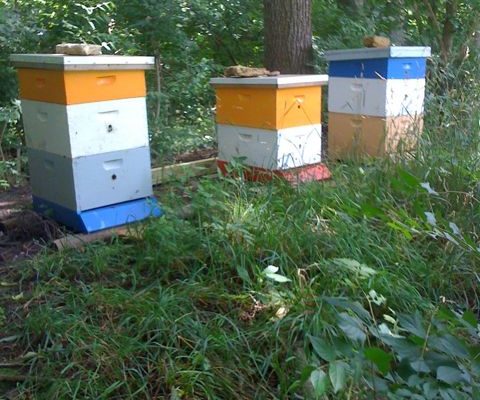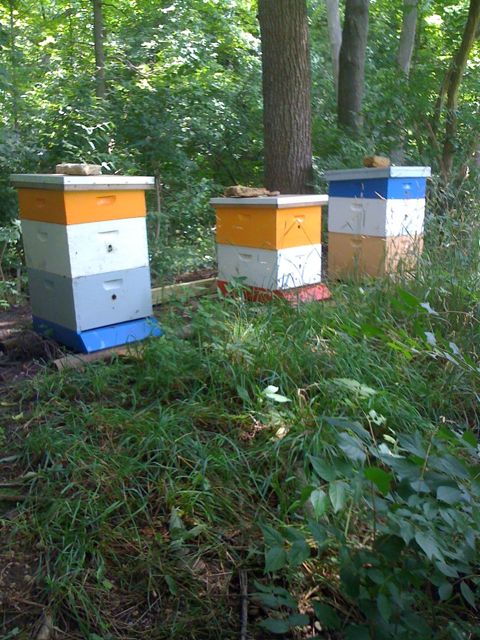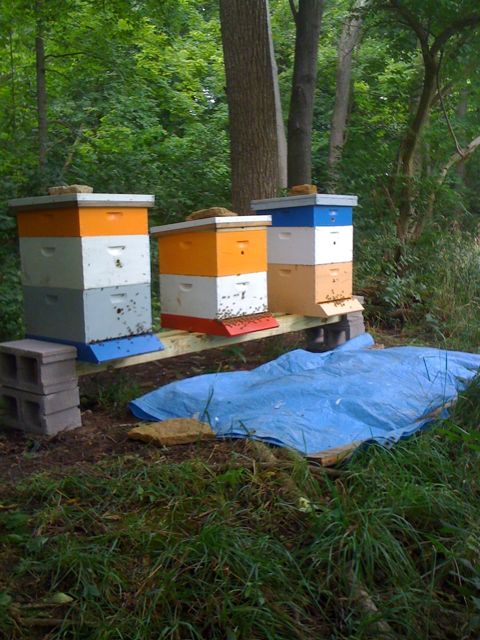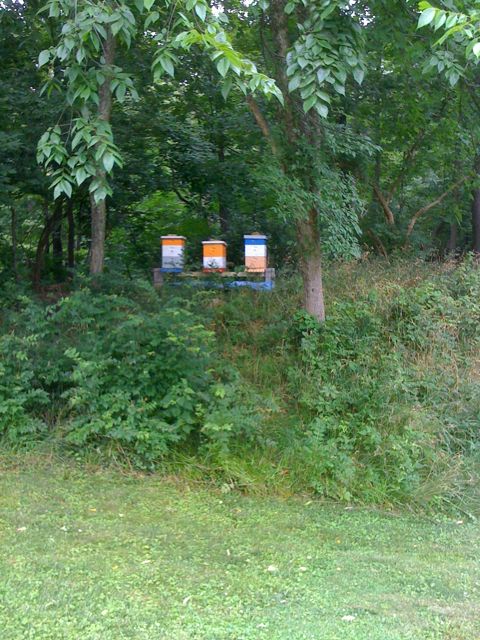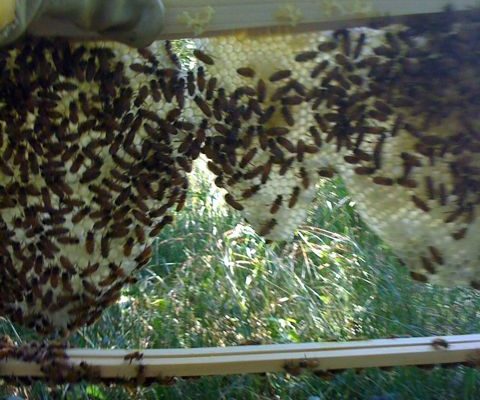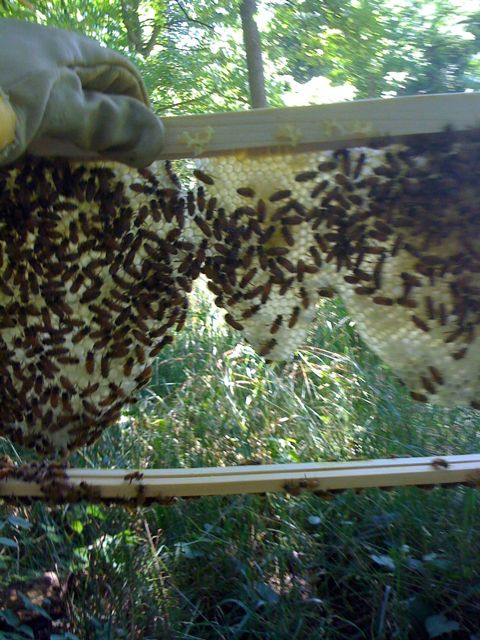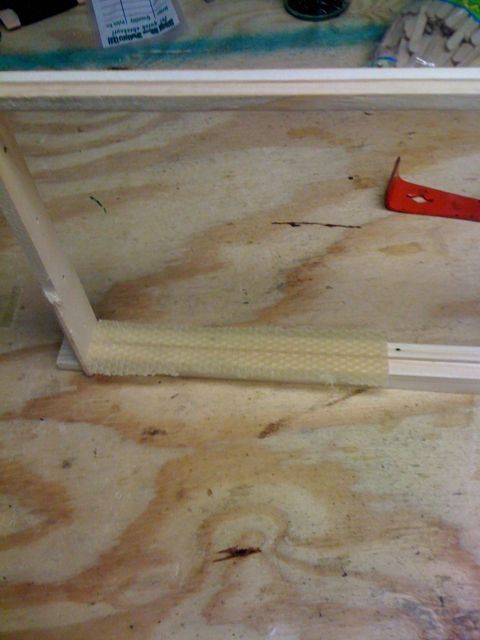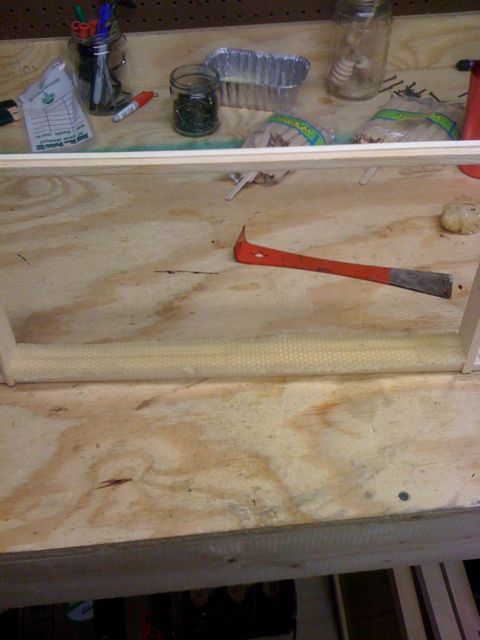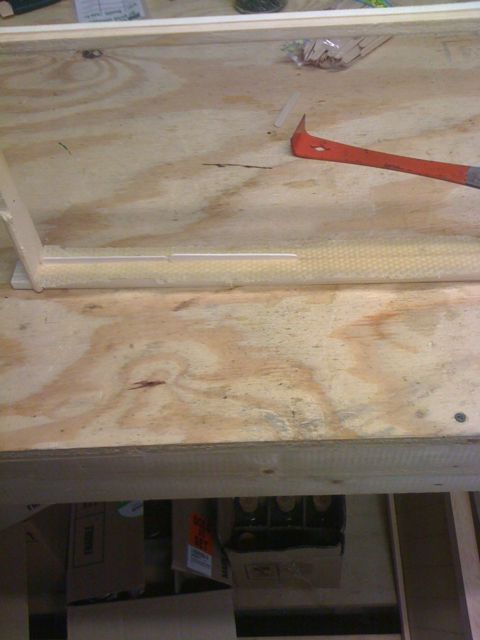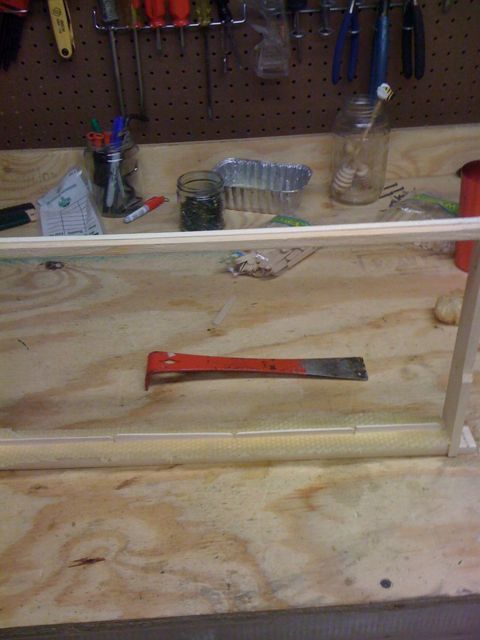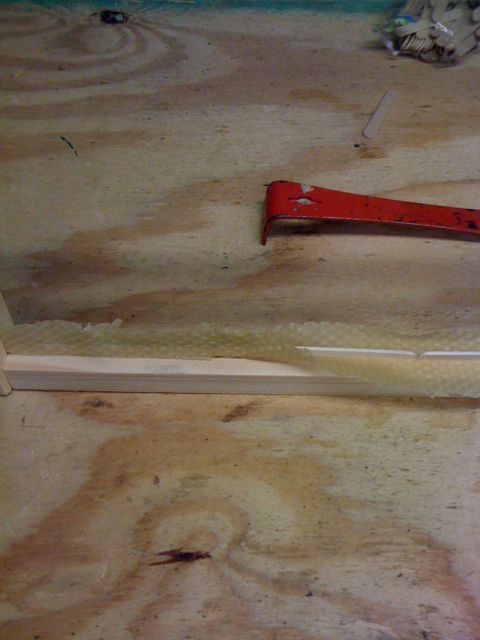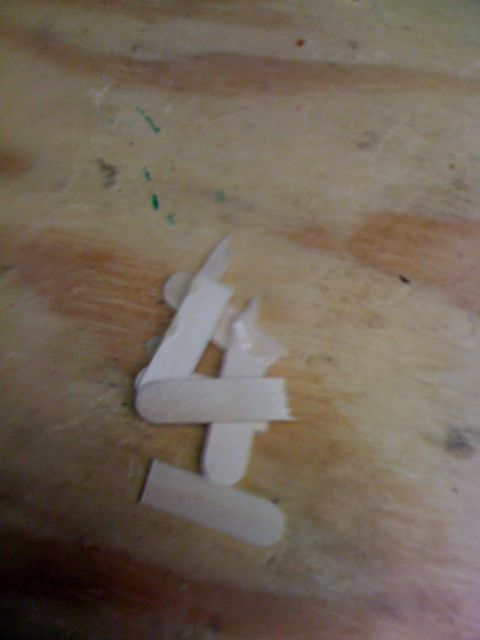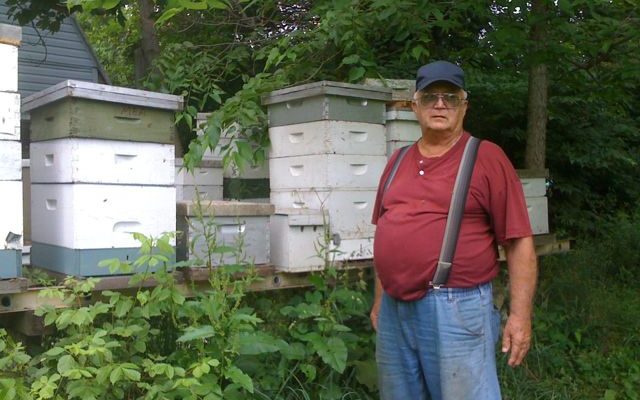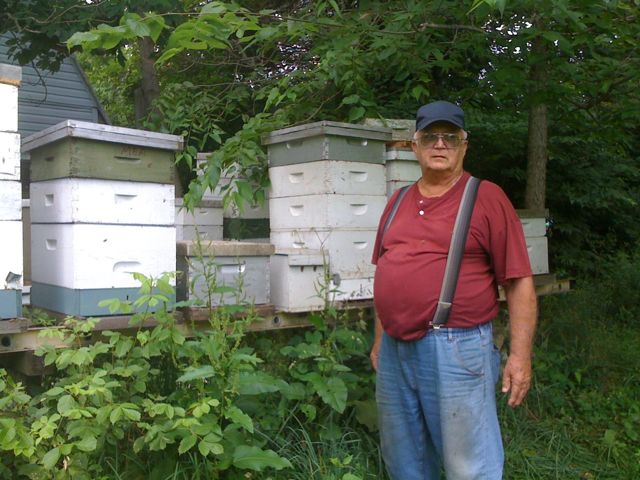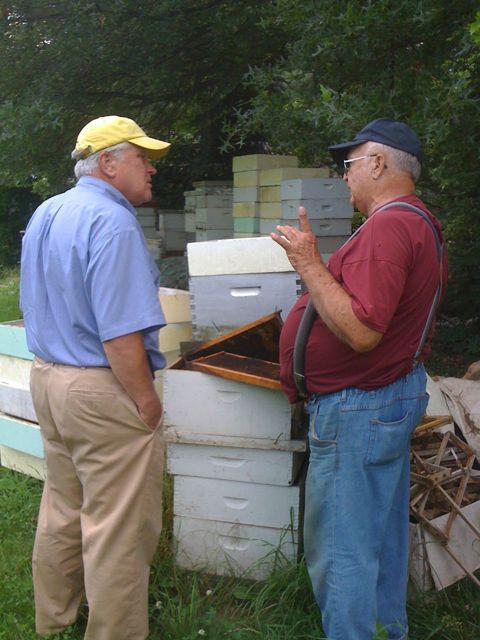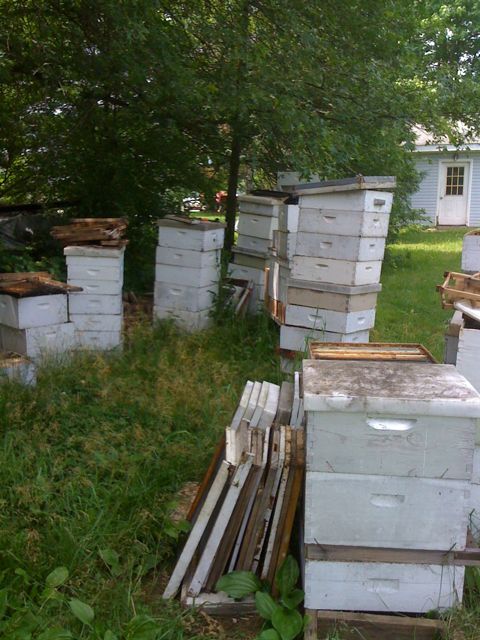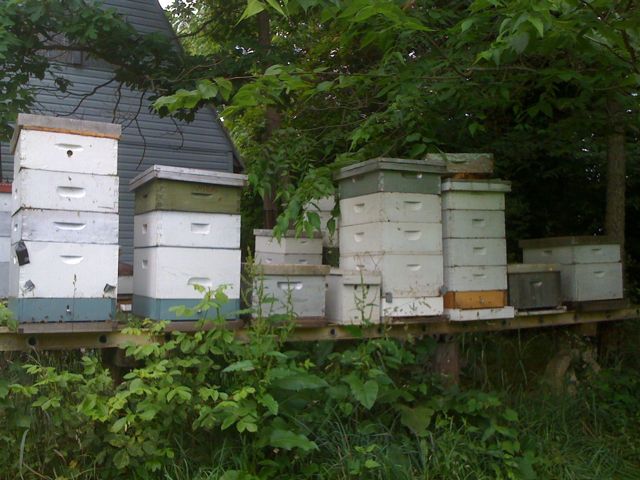A question arose on one of the forums I read: Do you talk to your bees?
Well, of course I do. I can’t imagine not. After a while, you know, I believe we get to know one another. I already ask them to forgive me for squishing them, to tell me what they’re doing, to move just a little bit so I can put this thing back, to get the heck off my veil, to quit head butting me.
I’m eager for the day when I can simply tell them what’s on my mind…to tell them the events of the day. Well, come to think of it, I guess I already do this. It’s funny…both Deb and I walk back there at least once a day and visit them. I don’t know what Deb says to them, but I see her there.
There’s a long tradition of “telling the bees” when there’s a death in the family. Someone, usually a child, is sent with black cloth to tell the bees of the death. The cloth is then draped over the hives. And, you know, I love this idea. When I die, will someone please tell the bees?

